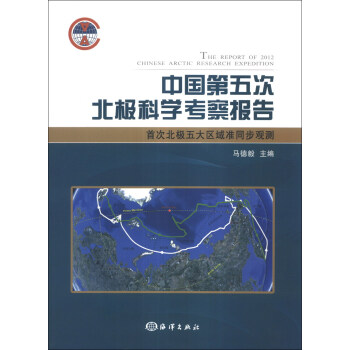![四波混频相干控制(英文版) [Coherent Control of Four-Wave Mixing]](https://pic.windowsfront.com/10554283/5661350aN2ecc7e8e.jpg)
四波混频相干控制(英文版) [Coherent Control of Four-Wave Mixing] pdf epub mobi txt 电子书 下载 2025
- Coherent Control
- Four-Wave Mixing
- Nonlinear Optics
- Quantum Optics
- Laser Physics
- Optical Physics
- Ultrafast Optics
- Spectroscopy
- Quantum Control
- Photonic Devices

具体描述
内容简介
《四波混频相干控制(英文版)》讨论原子相干诱导的多能级原子系统中四波混频过程频率、时间与空间领域的相互作用。《四波混频相干控制(英文版)》涉及五个方面的内容:多能级多色激光相干产生的四波混频超快极化拍;色锁噪声场关联的拉曼-瑞利-布里渊增强极化拍;超薄、微米量级及长样品池中的不同类型双缀饰四波混频过程:多能级电磁感应透明介质中四波混频与六波混频时间空间干涉:探测场与四波混频场的空间移动与分裂以及四波混频信号中的带隙孤子串、旋转孤子以及多分量矢量孤子。《四波混频相干控制(英文版)》适合非线性光学领域的专家学者以及在校研究生和本科生学习参考。目录
1 Introduction1.1 Nonlinear Susceptibility
1.2 Coherence Functions
1.3 Suppression and Enhancement of FWM Processes
1.4 Double Dressing Schemes of Probe and Four-Wave Mixing Fields
1.5 Spatial Optical Modulation via Kerr Nonlinearities
1.6 Formations and Dynamics of Novel Spatial Solitons
References
2 Ultrafast Polarization Beats of Four-Wave Mixing Processes
2.1 Four-level Polarization Beats with Broadband Noisy Light
2.1.1 Basic Theory
2.1.2 FLPB in a Doppler-broadened System
2.1.3 Photon-echo
2.1.4 Experiment and Result
2.2 Ultrafast Sum-frequency Polarization Beats in Twin Markovian Stochastic Correlation
2.2.1 Basic Theory
2.2.2 Second-order Stochastic Correlation of ASPB
2.2.3 Fourth-order Stochastic Correlation of ASPB
References
3 Raman, Rayleigh and Brillouin-enhanced FWM Polarization Beats
3.1 Attosecond Sum-frequency Raman-enhanced Polarization Beats Using Twin Phase-sensitive Color Locking Noisy Lights
3.1.1 Basic Theory of Attosecond Sum-frequency REPB
3.1.2 Homodyne Detection of Sum-frequency REPB
3.1.3 Heterodyne Detection of Difference-frequency REPB
3.2 Competition Between Raman and Rayleigh-enhanced Four-Wave Mixings in Attosecond Polarization Beats
3.2.1 Basic Theory
3.2.2 Stochastic Correlation Effects of Rayleigh and Raman-enhanced FWM
3.2.3 The Raman and Rayleigh-enhanced Nonlinear Susceptibility in cw Limit
3.2.4 Homodyne Detection of ASPB
3.2.5 Heterodyne Detection of ASPB
3.2.6 Discussion and Conclusion
3.3 Coexisting Brillouin, Rayleigh and Raman-enhanced Four-Wave Mixings
3.3.1 Basic Theory
3.3.2 Homodyne Detection of ASPB
3.3.3 Heterodyne Detection of ASPB
3.3.4 Phase Angle
3.3.5 Discussion and Conclusion
References
4 Multi-Dressing Four-Wave Mixing Processes in Confined and Non-confined Atomic System
4.1 Temporal and Spatial Interference Between Four-Wave Mixing and Six-Wave Mixing Channels
4.2 Intermixing Between Four-Wave Mixing and Six-Wave Mixing in a Four-level Atomic System
4.2.1 Interplay Between FWM and SWM
4.2.2 Discussion
4.3 Coexistence of Four-Wave, Six-Wave and Eight-Wave Mixing Processes in Multi-dressed Atomic Systems
4.3.1 Parallel and Nested Dressing Schemes
4.3.2 Interplay Among Coexisting FWM, SWM and EWM Processes
4.4 Controlled Multi-Wave Mixing via Interacting Dark States in a Five-level System
4.4.1 Basic Theory
4.4.2 Numerical Results
4.4.3 Discussion
4.5 Polarization Interference of Multi-Wave Mixing in a Confined Five-level System
4.5.1 Basic Theory
4.5.2 MWM in Long Cells
4.5.3 MWM in Ultra-thin and Micrometer Cells
4.5.4 Discussion
References
5 Enhancement and Suppression in Four-Wave Mixing Processes
5.1 Interplay among Multi-dressed Four-Wave Mixing Processes
5.2 Observation of Enhancement and Suppression of Four-Wave Mixing Processes
5.3 Controlling Enhancement and Suppression of Four-Wave Mixing via Polarized Light
5.3.1 Theoretical Model and Analysis
5.3.2 Experimental Results
5.4 Enhancing and Suppressing Four-Wave Mixing in Electronm-genetically Induce Transparency Window References
6 Multi-Wave Mixing Processes in Multi-level Atomic System
6.1 Modulating Multi-Wave Mixing Processes via Polarizable Dark States
6.2 Polarization Spectroscopy of Dressed Four-Wave Mixing in a Three-level Atomic System
6.2.1 Various Nonlinear Susceptibilities for Different Polarization Schemes
6.2.2 Nonlinear Susceptibilities for Zeeman-degenerate System Interacting with Polarized Fields
6.2.3 Third-order Density-matrix Elements in Presence of Dressing Fields
6.3 Controlling FWM and SWM in Multi-Zeeman Atomic System with Electromagnetically Induced Transparency
6.3.1 Basic Theory
6.3.2 Dual-dressed EIT
6.3.3 Four-Wave Mixing
6.3.4 Six-Wave Mixing
References
7 Controlling Spatial Shift and Spltting of Four-Wave Mixing
7.1 Basic Theory
7.2 Electromagnetically-induced Spatial Nonlinear Dispersion of Four-Wave Mixing Beams
7.3 Spatial Dispersion Induced by Cross-phase Modulation
7.4 Experimental Demonstration of Optical Switching and Routing via Four-Wave Mixing Spatial Shift
7.4.1 Theoretical Model and Experimental Scheme
7.4.2 Optical Switching and Routing via Spatial Shift
7.5 Controlled Spatial Beamsplitter Using Four-Wave Mixing Images
7.6 Spatial Splitting and Intensity Suppression of Four-Wave Mixing in V-type Three-level Atomic System
References
8 Spatial Modulation of Four-Wave Mixing Solitons
8.1 Basic Theory
8.1.1 Calculation of Double Dressed Cross-Kerr Nonlinear Index of Refraction
8.1.2 Calculation of Analytical Solution of One-dimensional Bright and Dark Spatial Solitons
8.2 Novel Spatial Gap Solitons of Four-Wave Mixing
8.3 Dipole-mode Spatial Solitons of Four-Wave Mixing
8.4 Modulated Vortex Solitons of Four-Wave Mixing
References
Index
用户评价
作为一个对光物理学充满好奇的学生,这本书的标题“Coherent Control of Four-Wave Mixing”无疑点燃了我探索的激情。我了解到四波混频是一种非常有趣的非线性光学现象,它能够产生新的光频率,这在光通信、光谱分析以及量子信息处理等领域都有潜在的应用。但是,要让这个过程变得可控,特别是能够精确地选择和调控产生的频率,就需要更深层次的理解和技术。我期待这本书能够为我揭示“相干控制”的奥秘,比如它是否利用了量子力学中的相干性原理,或者是否涉及一些先进的激光技术。我希望书中能够解释清楚,如何通过精确控制入射光场的时域和频域特性,来指导四波混频过程朝着我们期望的方向发展。我尤其希望看到书中能够提供一些定量的分析,让我能够理解相干控制的参数是如何影响混频效率和输出光谱的。
评分初次接触这本书,我主要是被“四波混频”和“相干控制”这两个名词所吸引。在我之前的学习和工作中,虽然接触过一些非线性光学现象,但对于如何精确地操控这些过程,特别是利用相干性来实现主动控制,一直感到有些模糊。这本书的标题直接点出了我想要深入了解的核心问题。我预想它会详细阐述四波混频的基本原理,比如其发生条件、涉及的参量以及常见的实现方式。更重要的是,我期待它能深入探讨“相干控制”的理论基础,比如如何利用不同波长、不同相位和时序的光场来调控四波混频的输出,从而实现诸如频率转换、光谱整形、光脉冲压缩甚至量子态制备等高级功能。我希望书中能够包含大量的理论推导和模型分析,让我能够理解其中的物理机制,而不是停留在现象的描述层面。同时,作为一本英文版的图书,我期望它能够引用最新的研究成果和经典文献,为我提供一个全面而深入的学术视野,引导我进入这个复杂而迷人的研究领域。
评分这本书的出版,恰好填补了我近期在研究中遇到的一个关键性空白。我的研究方向涉及到一些需要精确控制光信号频率和带宽的应用,而四波混频正是实现这些目标的重要手段之一。然而,传统的四波混频过程往往存在输出不确定性高、效率受限等问题。我非常渴望了解如何通过“相干控制”来克服这些挑战。我预想这本书会深入探讨如何利用激光器的相干性,例如通过相干脉冲序列或者锁相的激光阵列,来精确地驱动四波混频过程。我希望书中能够提供一些关于如何设计实验平台、选择合适介质以及优化泵浦光和信号光的相互作用条件的指导。此外,我还在思考,这本书是否会对不同类型的四波混频过程(例如,自由载流子诱导四波混频、激子-极化激元四波混频等)在相干控制方面的应用进行比较和分析,并讨论各自的优缺点。
评分在阅读这本书之前,我一直对非线性光学中的“四波混频”现象感到好奇,但对其“相干控制”方面的细节了解甚少。我所知道的四波混频,更多是停留在其能够产生新频率的层面,而如何精确地调控这些新频率,或者如何让混频过程产生特定性质的光,对我来说是一个未解之谜。这本书的英文标题,让我感觉它很可能深入探讨了如何利用激光的相干性来“指挥”四波混频过程。我预想书中会详细介绍不同类型的相干控制方案,比如使用多束泵浦光、或者利用飞秒脉冲序列来诱导和调控非线性相互作用。我希望这本书能够提供一些非常具体的技术细节,例如如何通过优化光场的相位匹配条件,或者如何利用介质的非线性响应特性,来实现对四波混频输出的精确控制。我非常期待书中能够有关于实验装置的介绍,让我能够对实际操作有一个初步的印象。
评分读完这本书(或者说,是尝试着去阅读),我发现它在结构上似乎做了一个非常细致的梳理。我之前对四波混频的理解,更多是基于一些零散的课堂笔记和零星的论文,缺乏一个系统性的框架。这本书很可能从最基础的非线性光学方程出发,逐步推导出四波混频的数学模型,然后引入相干控制的概念,并在此基础上,可能分门别类地讨论不同的相干控制策略。我猜测其中会涉及多光束耦合的理论,以及如何通过优化入射光场的参数(如强度、相位、偏振、时间延迟等)来影响混频产物的性质。我特别感兴趣的是,书中是否会给出一些具体的实验方案或者理论计算的案例,来演示这些相干控制方法的有效性。我希望这本书能够提供一些非常直观的图示或者仿真结果,帮助我理解抽象的理论概念,并且能够让我对如何在实际实验中实现这些控制技术有一个初步的认识。
相关图书
本站所有内容均为互联网搜索引擎提供的公开搜索信息,本站不存储任何数据与内容,任何内容与数据均与本站无关,如有需要请联系相关搜索引擎包括但不限于百度,google,bing,sogou 等,本站所有链接都为正版商品购买链接。
© 2025 windowsfront.com All Rights Reserved. 静流书站 版权所有






![几何分析手册(第Ⅰ卷)(英文) [Handbook of Geometric Analysis(Vol.Ⅰ)] pdf epub mobi 电子书 下载](https://pic.windowsfront.com/10962799/5678c127Nde7270ba.jpg)


![田野草本植物资源 [Herbaceous Plant Resources in the Fields] pdf epub mobi 电子书 下载](https://pic.windowsfront.com/11147476/rBEHaFDvzfkIAAAAAAlV-aR3qhYAADmSAEiWWIACVYR219.jpg)










